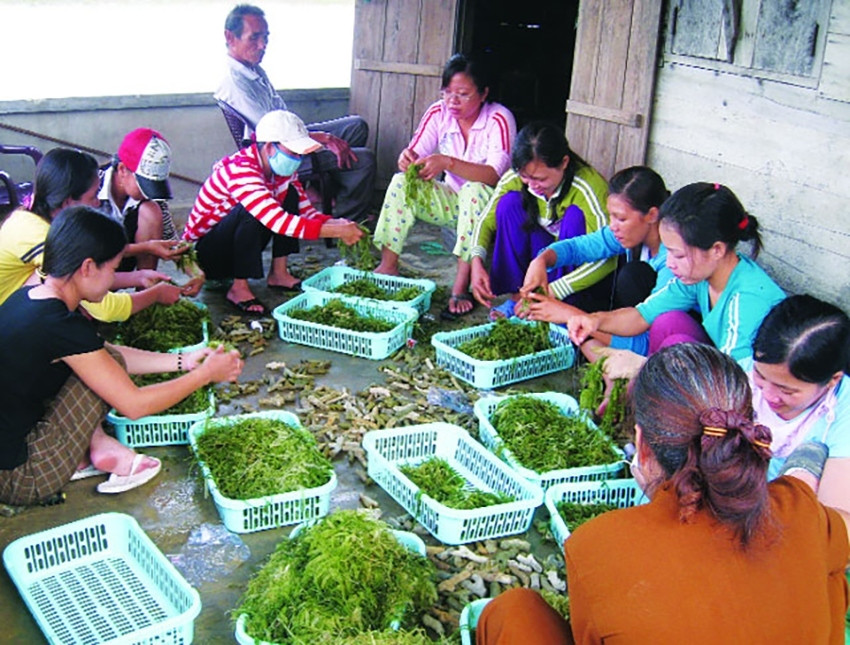

According to forecasts, by 2050, human food demand for the item will increase by 70%, equivalent to 5.4 thousand million tonnes annually.
However, the agricultural sector's capacity to sustain this demand is limited by lack of land and fresh water, whilst it is also threatened by climate change.
While seaweed farming is widely considered to be environmentally friendly, because it has the ability to absorb CO2 5 times faster than trees, this is an aquatic species with a short life cycle and high biomass output that is capable of creating sustainable livelihoods for people. This is the main reason why seaweed farming is of great interest today.
According to the Directorate of Fisheries under the Ministry of Agriculture and Rural Development, in the nation there are 88 species of seaweed that have economic value and can be grown at sea, with a potential area at roughly 900,000 hectares. However, at present the country has only exploited about 16,500 hectares of it. This therefore represents an industry with ample room for development but one that also faces many challenges.
Seafood experts have said that currently, Vietnamese seaweed has not yet formed a raw material area with a planting area code, with the seaweed farming area still being too fragmented and scattered.
Furthermore, scientific research on seaweed is limited, processing capacity is weak, and there is no industry association. As a result, the nation has little recognition in terms of the world seaweed map.
In order to find solutions to further boost the development of seaweed farming, Minister of Agriculture and Rural Development Le Minh Hoan said that what needs to be done is to create a new value space for an industry with great potential, making seaweed become a key economic sector of the fisheries industry.
Source: VOV